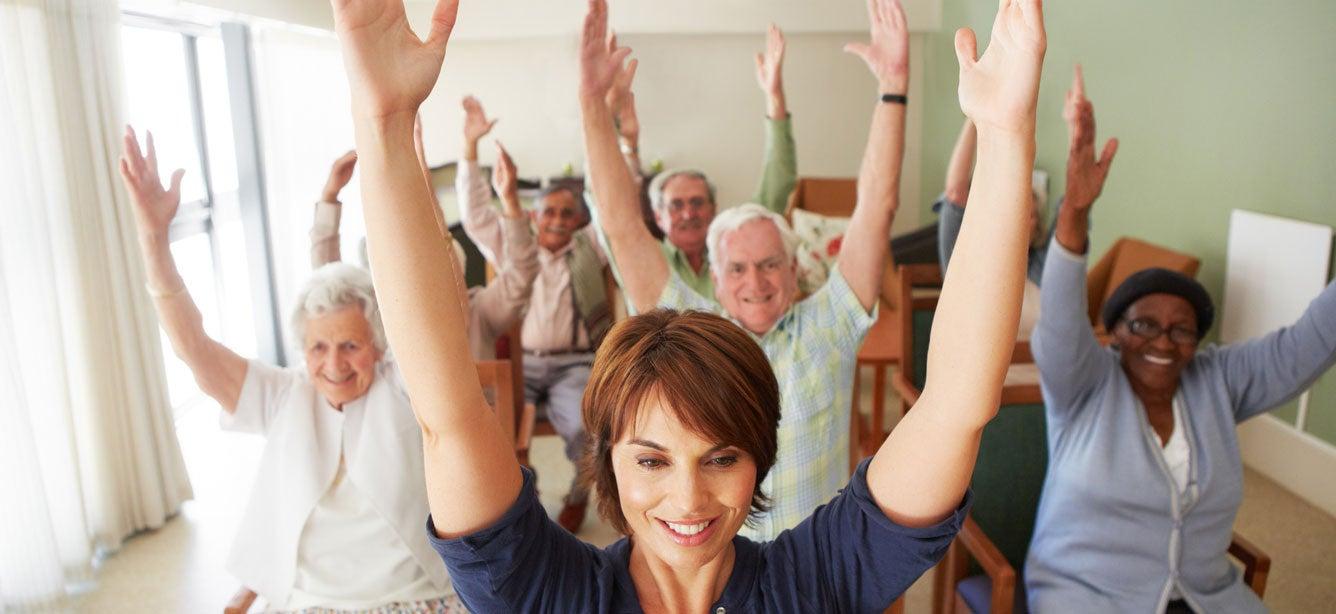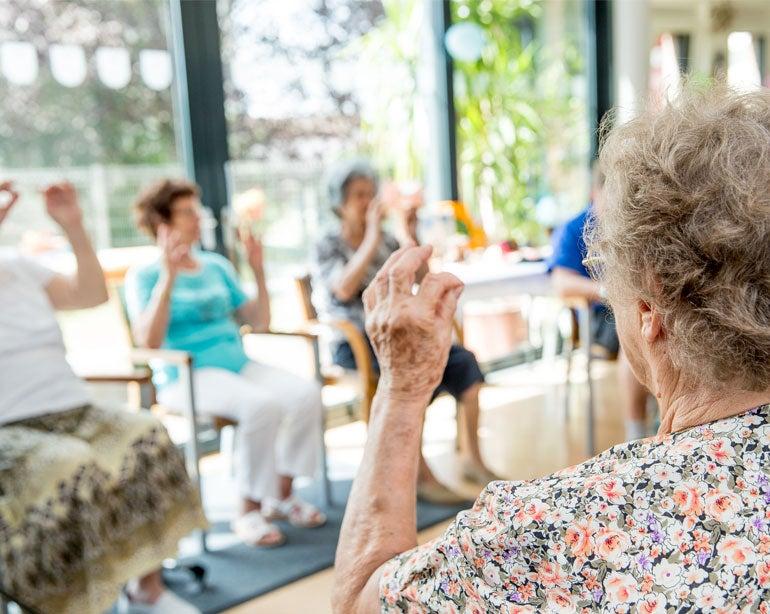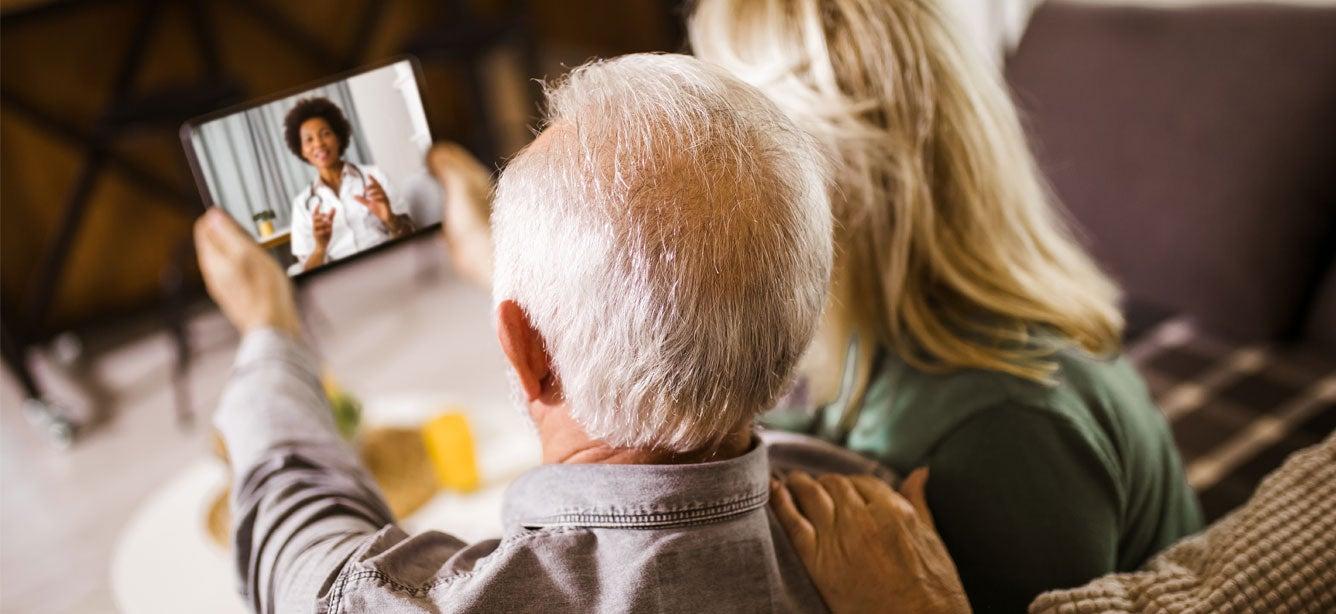Parkinson’s Disease at a Glance and the Resources That Help
5 min read

There are nearly 1 million Americans living with Parkinson’s disease (PD) and more than 10 million people living with the disease worldwide. Each year, at least 90,000 people in the U.S. are newly diagnosed with Parkinson’s.1 As the population continues to age, the number of people diagnosed with PD is expected to rise substantially.
Helping senior centers with free resoures about Parkinson's
With Parkinson’s prevalence on the rise, it is likely that Parkinson’s disease in some way impacts the community members at your senior center. Whether some are living with the disease themselves or are helping to care for a family member or friend managing the disease, you can support them on their journey to live well with PD.
What is Parkinson’s disease?
Parkinson’s disease is a neurodegenerative disease affecting dopamine producing cells in the brain. Dopamine is primarily responsible for controlling movement and emotional response. As Parkinson’s progresses and the brain produces less dopamine, individuals will experience various symptoms.
Symptoms related to movement can include tremor (shaking), bradykinesia (slowness of movement), rigidity and balance problems. Non-movement symptoms can include depression, anxiety and problems with sleep. Symptoms progress differently for everyone. There is no cure for PD, but treatments and expert care can significantly improve quality of life.
Most people are diagnosed with Parkinson’s in their 60s. About four percent of people are diagnosed before ago 50—this is called Young-Onset Parkinson’s disease (YOPD).
No matter the age of diagnosis, people with Parkinson’s can continue to live well for many years with the right care, support and resources.
The book Frequently Asked Questions: A Guide to Parkinson’s Disease answers the most popular Parkinson’s questions.
Understanding the early signs of Parkinson’s
Parkinson’s symptoms are not always visible, and it is common for people to mistake PD symptoms for normal signs of aging. The Parkinson’s Foundation has identified 10 early signs of PD, including:
- Tremor: A slight shaking while at rest in the fingers, thumb, hand or chin
- Loss of smell: The inability to smell foods like pickles, licorice or bananas
- Trouble sleeping: Sudden movements or acting out dreams
- Small handwriting: A change in handwriting such as crowded words
- Trouble moving or walking: Stiffness or rigidity in the body, arms or legs
Experiencing a single symptom may not mean that a person should worry. However, when experiencing several symptoms, it is a good idea to schedule an appointment with a doctor.
The 10 Early Signs of Parkinson’s Disease brochure walks readers through the 10 symptoms that can indicate Parkinson’s, as well as what’s “normal.” This short guide is an essential tool for older adults and the aging services professionals who support them.
How to provide support after a Parkinson’s diagnosis
It’s normal for people to feel a range of emotions after receiving a Parkinson’s diagnosis. Some may find relief in putting a name to previously unexplained symptoms. There can be fear about what the future entails for managing a chronic illness. No matter the stage of diagnosis or the progression of symptoms, everyone should feel empowered to take control of their PD journey and care.
These five steps, in any order, can help people begin to live better with PD:
- Determine personal goals and priorities.
- Find someone you can talk to and stay connected.
- Create and practice health habits.
- Be active in whatever way works best.
- Find a doctor who is an expert in Parkinson’s disease.
The Newly Diagnosed Kit helps people with Parkinson’s and their care partners get started on their journey to living well with Parkinson’s.
How caregivers can help support a Parkinson's diagnosis
Caring for a person with progressive disease can look different for everyone. Care partner responsibilities can include medication management, taking over financial decision-making, and helping a loved with the tasks of daily life.
The book Caring and Coping is a guide to building a productive care partnership to minimize stress and maximize quality of life. Through a series of exercises, this book helps people to prepare emotionally, physically and financially for their journey as a PD care partner.
Parkinson's resources for professionals and continuing education
To improve care for people with Parkinson’s, the Parkinson’s Foundation focuses on best-practice care training through professional education courses. Online courses are designed to help make life better for people with Parkinson’s and those who care for them. Healthcare professionals can receive continuing education units (CEUs) through several free online and hybrid learning opportunities.
Visit Parkinson.org/ProfEd to learn more and to explore resource guides tailored by discipline for the professionals who support people with Parkinson’s and their loved ones including social workers, nurses, exercise professionals, occupational therapists, physical therapists and speech and language pathologists.
How the Parkinson’s Foundation can help
You can order any of the free resources for your senior center by calling the Parkinson’s Foundation Helpline at 1-800-4PD-INFO (1-800-473-4636), or access at Parkinson.org/Library. The Parkinson's Foundation's Helpline can answer your questions Monday through Friday from 9 a.m. to 7 p.m. EST. Helpline specialists provide callers with information about Parkinson’s, emotional support, and referrals to nearby professionals and resources.
Sources
1. A.W. Willis, et al. Incidence of Parkinson's Disease in North America. npj Parkinson's Disease. Dec. 15, 2022. Found on the internet at https://www.nature.com/articles/s41531-022-00410-y




